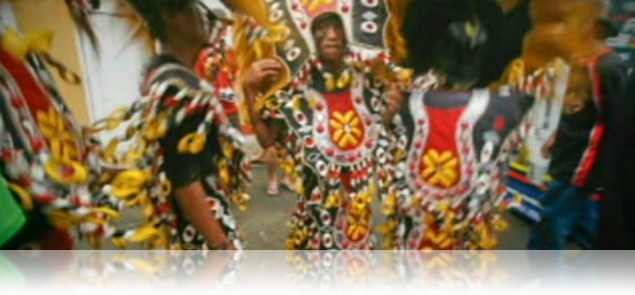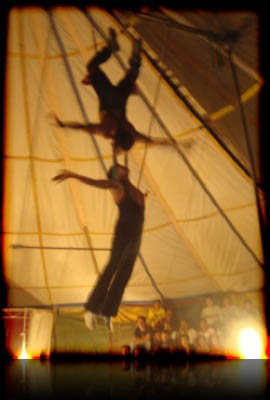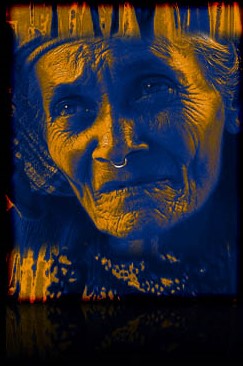Ati-atihan: Mother of Philippine Festivals
DOI:
https://doi.org/10.25071/1913-5874/37357Abstract
Every January, thousands of people from far and near dance, play music, and pray for three days in the streets of Kalibo, a town in the province of Aklan in the central Philippines. They are celebrating the Ati-atihan, an annual festival in honor of the Santo Ni–o, the Holy Child Jesus, and in remembrance of the indigenous Atis—commonly known as the Negritos—who are the putative ancestors of the Filipinos. The day before the third Sunday when the Ati-atihan reaches its climax with a grand procession, the local government of Kalibo holds a street dancing competition that tourists and residents await with much anticipation.
In January 2009 I collaborated with photographer Nana Buxani, videographer Fruto Corre, and editor Florencito Fernandez to document the Ati-atihan and produce the present multimedia project. As a way of calling additional attention to the idea of social constructivism deeply embedded in the Ati-atihan performance—an artificial construction reiterated by the editing and selection of photos and ambient sounds, I asked my brother Peter Alcedo, Jr., who has played music for the Ati-atihan, to compose an original score for the project. In Ati-atihan: Mother of Philippine Festivals, I focus on five participants to illustrate the Ati-atihan’s ever-changing synthesis of sacred and secular, traditional and modern, local and global, serious and playful. This is part of a collaborative project.
As a combination of photos, sounds, narration, and music, this multimedia project offers one model for articulating Ati-atihan’s cultural and historical complexity brought about by colonialism and the porosity of Philippine borders. Like any embodied performance, one could immediately conclude that to experience Ati-atihan one has to go to Kalibo during the festival season. But this multimedia project does not push solely for that kind of travel and experience. Rather, its images and the way they have been arranged to move across the screen challenge the limits of the viewer’s location. To experience a festival such as the Ati-atihan, it has become necessary in the contemporary world to also encounter a cultural phenomenon outside of its physical locale and in the virtual realm, an encounter that adds to and re-affirms the hybrid discourse implicit in the performances of this particular festival.
Displaying race, gender, class in the Ati-atihanIn the Philippines, the Ati-atihan is known as a powerful instance of the dynamic blending of Filipino traditions from pre-colonial, colonial, and modern times. Much of the writing on the Ati-atihan emphasizes the festival’s ability to take on influences from inside and outside the culture of Aklan. Yet little attention has been paid to Ati-atihan as a public event that complicates the interaction between performance and politics.
During the Ati-atihan, a Tagalog word which means “to look like the Atis,” most participants apply soot on their bodies to imitate the dark skin of the Atis and to acknowledge the Ati heritage in Aklan. This is a symbolic move. The act of sooting connects Filipinos to a “pure” and “authentic” pre-colonial identity, playing with the representation of the Atis as the racial Other. When I conducted fieldwork in 2000 and recently in 2009, Ati-atihan participants had said that when they cover their bodies with soot they temporarily become one with the Atis, who are not members of their everyday lives. Through the darkening of their bodies, participants move away from the whiteness of their colonial history with Spain and the United States.
The Atis are central in this festival, but the local government of Kalibo and town residents have not invited the indigenous population to participate officially in the festival. Any participation by the Atis has invariably been happenstance and at the spur of the moment. However, at the January 2009 festival celebration, a group of Atis in a nearby town decided to join the street dancing competition for the first time. The participation of the Atis in 2009 questioned the fixing of their minority identity in its construction as primitive and unchanging. The performance of these participants is one instance on which I focus to underline the active role performance plays in the project of self-representation.
While static and uncontested images of the Atis sit at the core of the Ati-atihan festival, the Santo Niño, the Holy Child Jesus, and the people’s devotion to Him occupy that same position as well. For Lowland Filipinos, the Santo Niño stands, on the one hand, as a colonial tool the Spanish government introduced in the early part of the sixteenth century to convert the population to Roman Catholicism. On the other hand, the Santo Niño’s local transformations symbolize for Filipinos the folklorization and localization of a foreign religion, a process consistent with their other forms of postcolonial expressions.
The predominant belief of Aklanons that the Santo Niño is gender ambiguous and playful in character gives permission to participants and devotees alike to subvert the order of everyday life during the Ati-atihan. In addition, the ongoing impact of globalization and lasting legacies of colonialism explain the dancing of the participants and the repertoire played by the brass bands, including the popular Lou Begas’ “Mambo Number 5” and the American song from the Great Depression “Happy Days Are Here Again,” which was brought to the Philippines during the American Colonial Period in the early twentieth century.
At the 2000 Ati-atihan festival, one participant who was a former ballet teacher, a devout Roman Catholic, and a self-identified member of the “third sex,” cross dressed in order to perform as a Folies Bergère chorus girl. More recently, at the 2009 celebration, a successful businessman dancing as Michael Jackson applied white powder to his face to imitate the light-skinned Michael Jackson of the 1990s. The expense incurred in his process of mimicry reflected achievement of a new economic status, and his whiteface the uneven migration of global media. Another participant, a Filipina returnee from the United States, tapped into her transnational network through a request she made to her diplomat cousin to buy traditional Hmong attire in Bangkok for her to wear at the festival’s grand procession.
All three claim that their enacting of such carnivalesque inversions fulfills a promise made to the Santo Niño. But their festival participation further highlights the ways in which performance was used as a critical social practice. In these dancers’ particular scenarios, performance was turned into a platform where they negotiated issues of gender politics and class difference, and navigated the flows of globalization, transnationalism, and modernity that have seeped into their lives. Aligning with the acts of resistance and negotiation deployed by the participants that people it, this multimedia project reminds us that public participation remains key in contesting colonialism and responding to its attendant social and cultural domination.
References
Leandro H. Fernandez, Philippine History Stories: The Story of Our Country for Young Readers (Manila: World Book Company, 1925)
John M. Garvan, The Negritos of the Philippines (Austria: Verlag Ferdinand Berger, 1964)
R.C. Lucero and E.A. Manuel, “Aklanon,” in CCP Encyclopedia of Philippine Art, Vol 1, ed. Nicanor Tiongson (Manila: Cultural Center of the Philippines, 1994), pp. 56-59
William Allan Reed, Negritos of Zambales: Department of the Interior Ethnological Survey Publications, Vol 1, Part 1 (Manila: Bureau of Public Printing, 1904)
Marcela Mijares Reyes-Tinagan, Viva Kay Se–or Santo Ni–o Viva! Aklan's Santo Ni–o Ati-atihan Festivals (Manila: National Commission for Culture and the Arts, 2001)
Alejandro Roces, Fiesta (Manila: Vera-Reyes, Inc, 1980)





